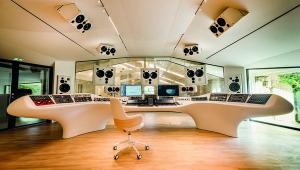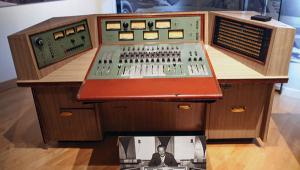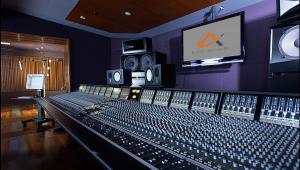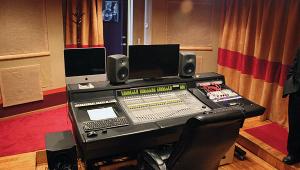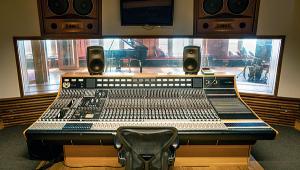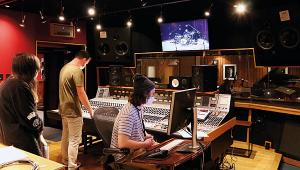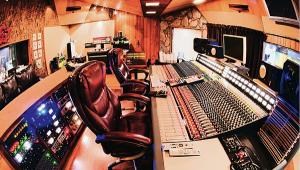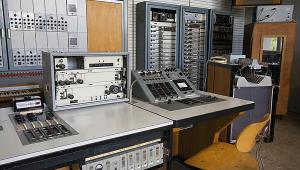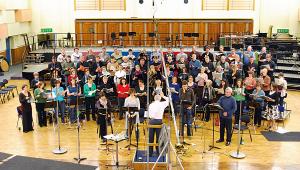Sound City Studios
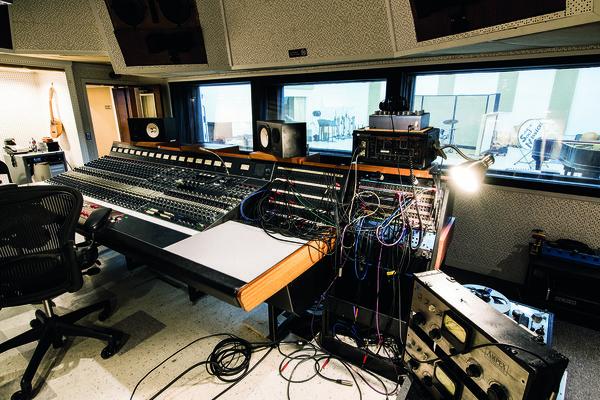
The jury was hung on the question of his talent. Neil Young said, 'This guy is unbelievable - he makes up the songs as he goes along, and they're all good'. So good, Young tried to get Warner Brothers to sign him. To no avail. Beach Boy Brian Wilson wasn't so sure and said something like, 'He hasn't got a musical bone in his body'. And Terry Melcher, Doris Day's son and hotshot producer of The Byrds, told him, 'I really do appreciate your talent but there's nothing I can do for you'.
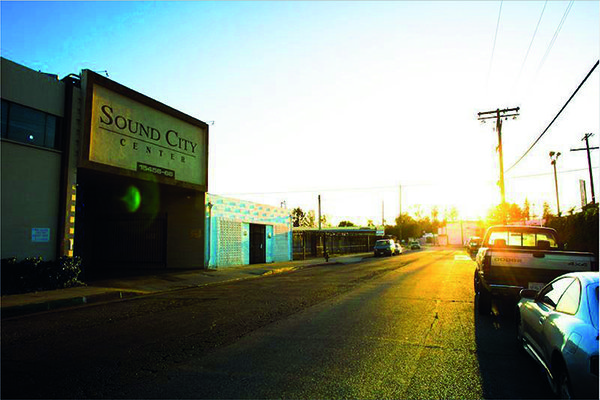
The chap in question was Charles Manson who, in 1968, entered Studio B at Sound City to make the demo he assumed would be the first step on his journey to becoming a rock superstar. The session had been paid for by another Beach Boy, Dennis Wilson, who'd been seduced by the gaggle of teenage girls that accompanied Manson everywhere and who was also admittedly a little intimidated by Manson's wild mood swings - Wilson called him 'The Wizard'. Manson had also been encouraged by Melcher, another seduced by the sex and the drugs on offer who had implied he'd be interested in working with him.
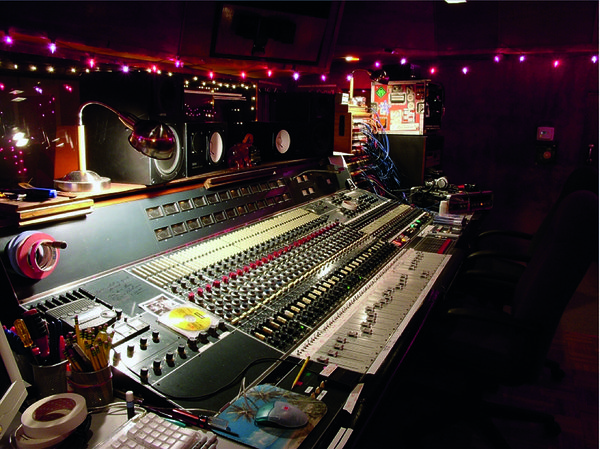
Ramblin' Man
The session did not go well. 'I never really dug recording', Manson said later. 'You go into the studio and it's hard to sing into microphones... I am my music.' By which he meant he lacked the discipline to nail a song and liked to just groove and free-associate in the moment.
His tapes were rough and ready, comprising a percussive beat on guitar, a rambling flow of lyrical consciousness and leaked-in background noise. They were rejected by all-and-sundry and Manson was discarded by the music biz elite. You know the rest. The Tate LaBianca murders, exactly one year later, are widely assumed to have been committed in part as revenge for the thwarting of Manson's grand plan.
You'll find none of this detail in Sound City, the highly entertaining 2013 documentary produced and directed by Foo Fighter Dave Grohl. Grohl, whose history with the studio we'll come to in a mo', was fully aware of the session but feared - probably rightly - that to include it would overwhelm everything else. So, an image of Manson appears just once, momentarily, and the documentary then rolls on to deal with matters less brutally dramatic.
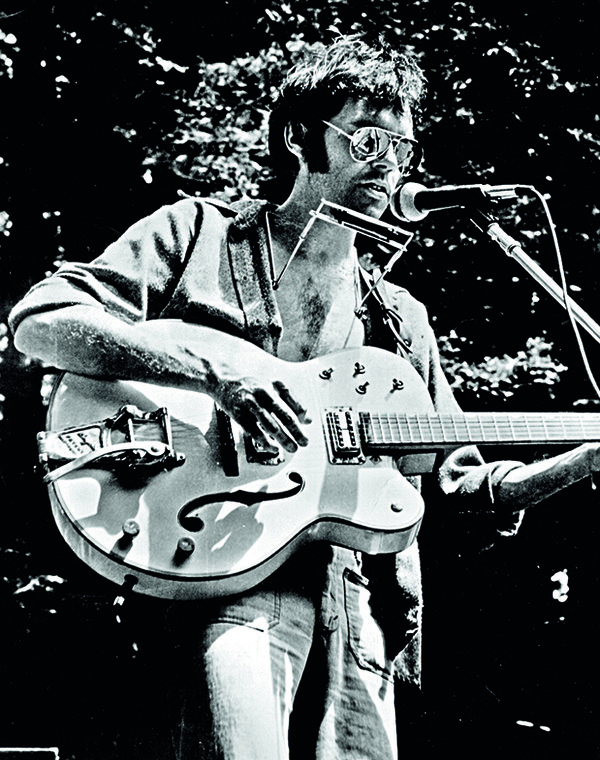
Neil Young in the 1970s
Keep On Trekking
The story goes like this... Sound City was set up in 1968 by a couple of entrepreneurs called Joe Gottfried and Tom Skeeter who wanted to start a record company but had little idea how to go about it. Business was poor to non-existent until they decided to splash out on a state-of-the-art recording console, purchased for the princely sum of $75,175 from English electronics engineer Rupert Neve. It was one of only four in the world, an 8028 with 28 inputs and no automation, described by one of the producers at the studio as, 'like the Enterprise on steroids from a long time ago'.
Sound City was an old Vox amp factory located at 15452 Cabrito Road in Van Nuys which, according to Neil Young, was just a place in the Valley you drove through to get to LA. Young was one of its first recognisable clients, rocking up with producer David Briggs to put finishing vocal touches to his breakthrough solo LP, After The Gold Rush in 1969. Briggs also worked there on Spirit's psych LP Twelve Dreams Of Dr. Sardonicus but it was a pair of unknowns that really put Sound City on the map...

The
album
Buckingham
Nicks, which
was recorded
in 1973
Lindsey Buckingham and Stevie Nicks had teamed up in a musical and personal partnership and were looking for a break. By immense good fortune they came to the attention of Keith Olsen who was working as a producer at the studio. He gave them a place to stay and produced their Buckingham Nicks album, which he then played to Mick Fleetwood of Fleetwood Mac who was looking for somewhere for his band to record that could accommodate his particularly fastidious attention to detail when it came to the drums.
Again, by sheer chance, Sound City boasted an amazingly full drum sound and Fleetwood was impressed enough to book time there. Then, on the eve of recording, the Mac's guitarist, Bob Welch, upped and quit and Fleetwood immediately asked Buckingham to replace him. The guitarist agreed only on condition that Nicks be asked to join too. And the rest, as they say, is history. Fifteen months later Fleetwood Mac by Fleetwood Mac, produced by Keith Olsen, was top of the album charts and other bands piled into Sound City hoping some of that magic might rub off on them.
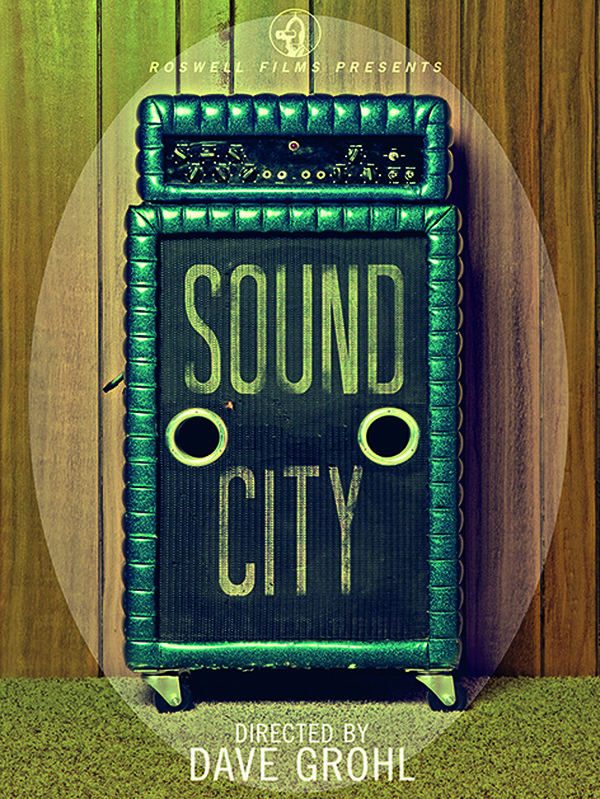 Poster
for Dave
Grohl’s 2013
documentary
on the studio
Poster
for Dave
Grohl’s 2013
documentary
on the studio
Secondhand News
Leon Russell and Denny Cordell were avid patrons, bringing acts on their Shelter label to record there. One of them was Mudcrutch who, when they split up, reassembled as Tom Petty & The Heartbreakers and made SC their home-from-home, recording Damn The Torpedoes ('79), Hard Promises ('81) and Southern Accents ('85) there during the band's hottest run.
Apart from the drum sound, the studio was considered something of a bargain, its prices kept relatively low because of its location and the little care and attention lavished on the place itself. It was so dirty, according to producer Rick Rubin, that he 'didn't feel like I wanted to sit on any furniture'. Apart from the treasured Neve 8028 console, much of the equipment was secondhand and, as another client was quoted as saying, 'Everything was already trashed, so anything goes!'.
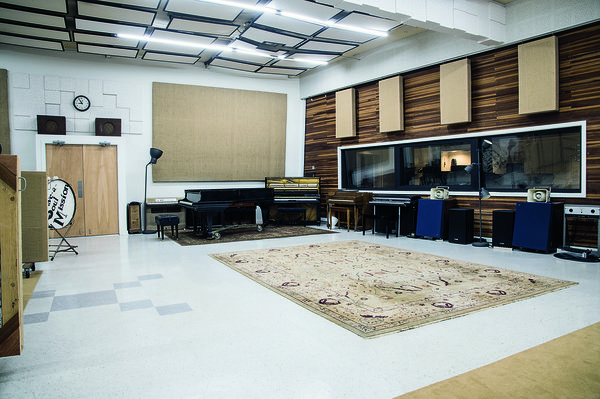
The live room remains acoustically untouched from when it was built in 1969
Legendary Linoleum
The interior of the main studio was allegedly never painted over, nor its linoleum tiles changed for fear that any such work would directly affect the legendary sound quality of the room. Grohl can't remember, so this may or may not have explained why Nirvana made the 16-and-a-half hour drive from Seattle to Van Nuys in May 1991 to record their second album, Nevermind, with producer Butch Vig on a shoestring budget of $65,000.
Much like the Mac album released nearly two decades earlier, the staggering success of Nevermind was the catalyst for a whole new raft of artists to flock to Sound City. Rage Against The Machine piled in to record their classic self-titled debut album in 1992, System Of A Down were there six years later to do their eponymous debut with Rick Rubin, who also avoided sitting down while working at SC with Slayer, Red Hot Chili Peppers and Johnny Cash.
He also teamed up there with Metallica, who chose the studio to do Death Magnetic in 2008 because they were played blind recordings of the bass drum sound from each of the big recording studios in the Los Angeles area and SC was easily the best. Others who did their considerable things in Studio A include Queens Of The Stone Age, Kings Of Leon, Nine Inch Nails and Arctic Monkeys.
Joe Gottfried passed away in 1992, at the age of 65. Tom Skeeter followed him in 2014, aged 82, the studio having been closed in 2011 and much of the equipment sold off, including the Neve 8028 which was purchased by Grohl and lovingly installed in his own Studio 606 in Northridge, California. A local Van Nuys label called Fairfax Recordings took over Studio A, refurbishing the control room and installing analogue recording equipment even older than the Neve console.

Dave Grohl (far left), Kurt Cobain and Krist Novoselic of Nirvana
Retro Reborn
Then, in early 2017, a partnership was formed between Sandy Skeeter, daughter of founder Tom Skeeter, and Olivier Chastan in order to reopen the studio. It became home to two of just 11 surviving Helios Type 69 consoles and continues to use classic analogue recording techniques alongside Pro Tools while the main studio remains exactly as it was built back in 1969.
'To me Sound City represents some sort of integrity, like a truth', says Grohl today. 'Actual people doing this thing that inspired millions and millions of fans all over the place to do the same thing.'
As for the Manson demos, they were finally released on an LP called Lie in 1972 in a batch of 2000 copies of which only 300 sold. They came out on the Awareness label, a bit of cash-in business cooked up by Phil Kaufman who'd been in jail with Manson at one stage. Kaufman, by the way, was Gram Parsons' road manager, the guy who stole Parsons' body from the mortuary and burned it in the desert near Joshua Tree. Phew! Those were the days!


